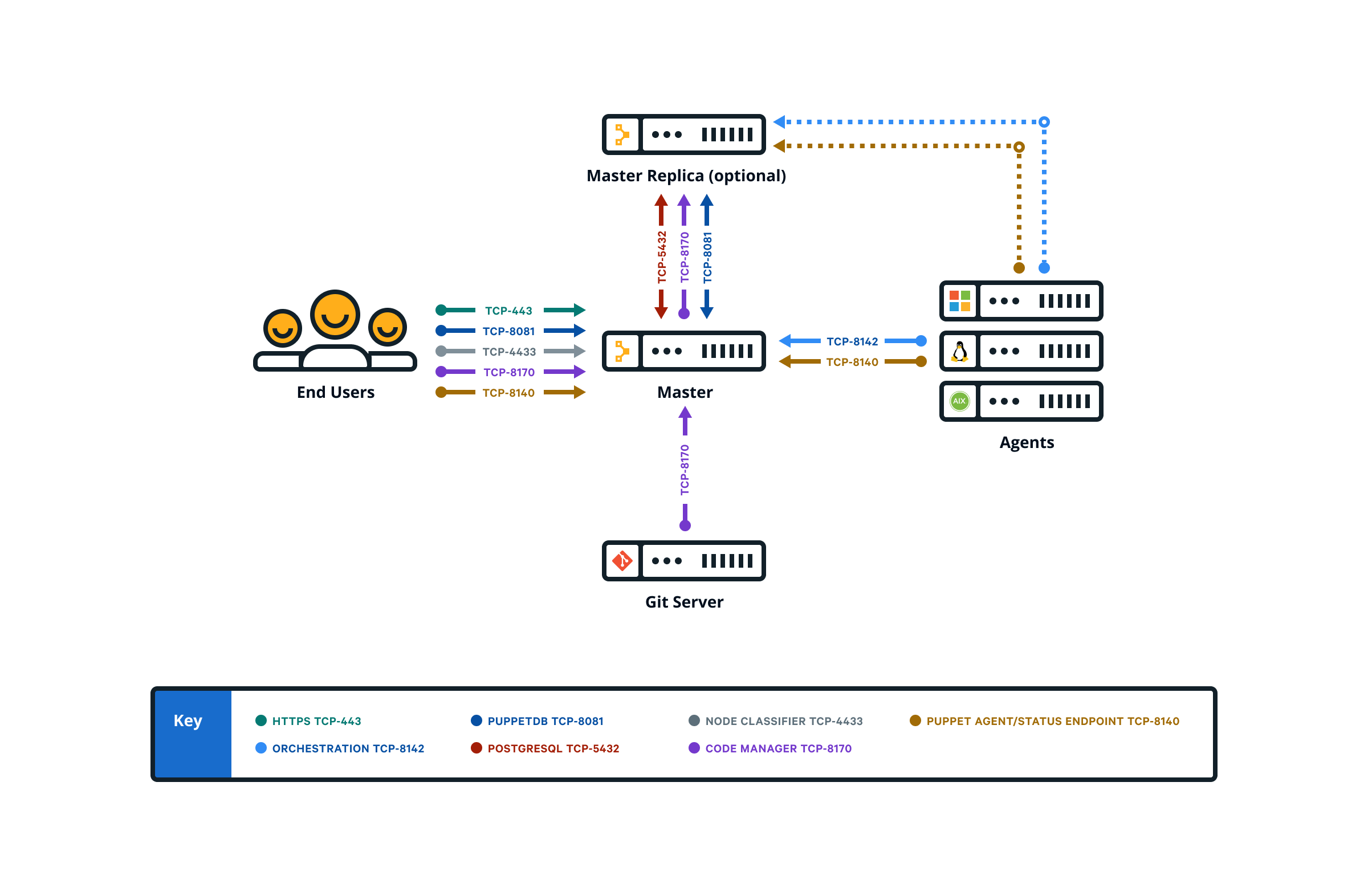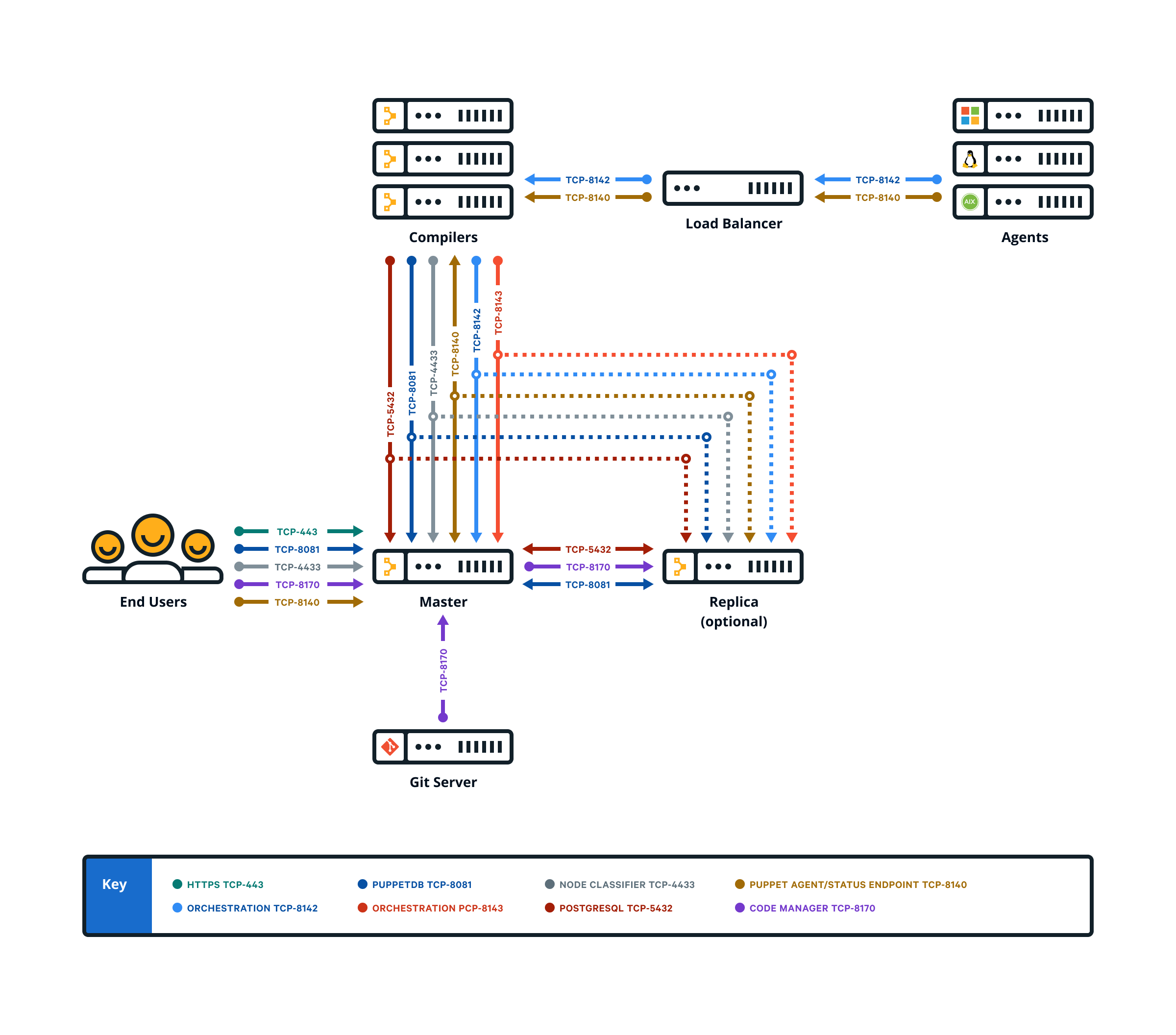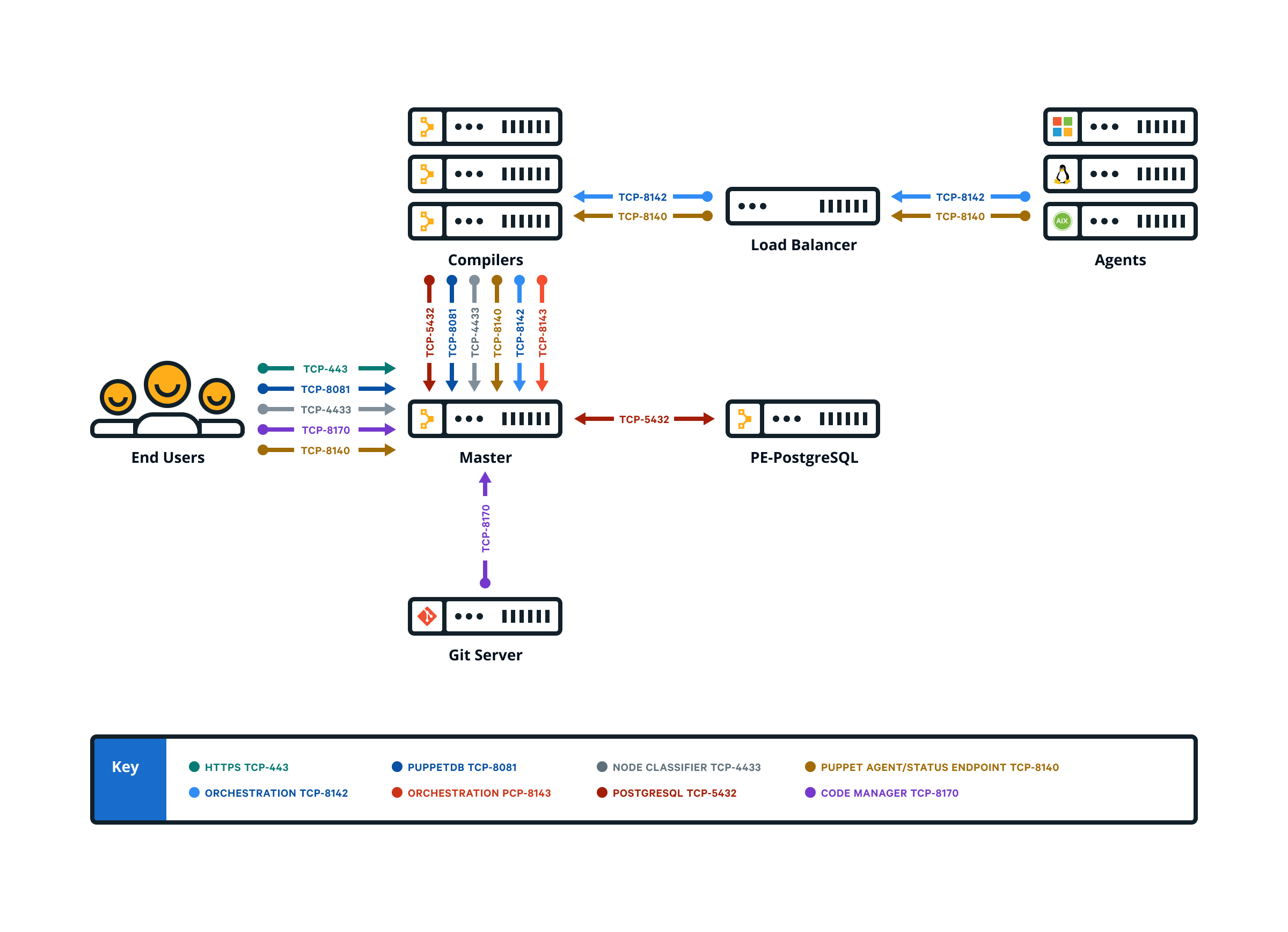System configuration
Sections
Before installing Puppet Enterprise, make sure that your nodes and network are properly configured.
Timekeeping and name resolution
Before installing , there are network requirements you need to consider and prepare for. The most important requirements include syncing time and creating a plan for name resolution.
Timekeeping
Use NTP or an equivalent service to ensure that time is in sync between your master, which acts as the certificate authority, and any agent nodes. If time drifts out of sync in your infrastructure, you might encounter issues such as agents recieving outdated certificates. A service like NTP (available as a supported module) ensures accurate timekeeping.
Name resolution
Decide on a preferred name or set of names that agent nodes can use to contact the master. Ensure that the master can be reached by domain name lookup by all future agent nodes.
You can
simplify configuration of agent nodes by using a CNAME record to make the master
reachable at the hostname puppet, which is the default master
hostname that is suggested when installing an agent node.
Web URLs used for deployment and management
PE uses some external web URLs for certain deployment and management tasks. You might want to ensure these URLs are reachable from your network prior to installation, and be aware that they might be called at various stages of configuration.
| URL | Enables |
|---|---|
| forgeapi.puppet.com | Puppet module downloads. |
| pm.puppetlabs.com | Agent module package downloads. |
| s3.amazonaws.com | Agent module package downloads (redirected from pm.pupptlabs.com). |
| rubygems.org | Puppet and Puppet Server gem downloads. |
| github.com | Third-party module downloads not served by the Forge and access to control repositories. |
Firewall configuration for standard installations
These are the port requirements for standard installations.

| Port | Use |
|---|---|
| 8140 |
|
| 443 |
|
| 4433 |
|
| 8081 |
|
| 8142 |
|
| 8170 |
|
| 5432 |
|
| 8150 and 8151 |
|
Firewall configuration for large installations with compilers
These are the port requirements for large installations with compilers.

| Port | Use |
|---|---|
| 8140 |
|
| 443 |
|
| 4433 |
|
| 8081 |
|
| 8142 |
|
| 8143 |
|
| 8170 |
|
| 5432 |
|
| 8150 and 8151 |
|
Firewall configuration for extra-large installations with compilers and standalone PE-PostgreSQL
These are the port requirements for extra-large installations with compilers and standalone PE-PostgreSQL

| Port | Use |
|---|---|
| 8140 |
|
| 443 |
|
| 4433 |
|
| 8081 |
|
| 8142 |
|
| 8143 |
|
| 8170 |
|
| 5432 |
|
| 8150 and 8151 |
|